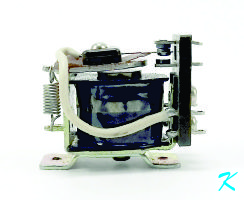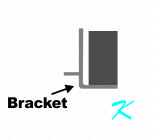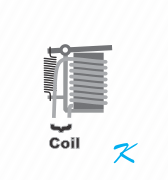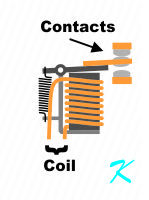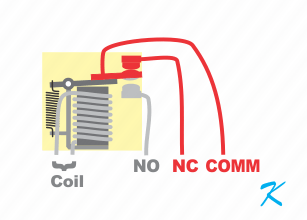How Does a Relay Work?
A relay is a mechanical switch that is turned on and off by an electromagnet.
A basic relay consists of an electromagnet and contacts. The electromagnet changes the position of the common contact from the normally closed contact to the normally open contact.
By Douglas Krantz
They're electrical switches; like a light switch on the wall, a relay turns on or off the electricity. The difference between a light switch on the wall and a relay, when getting down to the basics, is in order to turn it on or off, a person moves the lever on a light switch and an electromagnet moves the lever on a relay.
A relay, though, has a number of parts because it converts electrical current to mechanical movement and uses the mechanical movement to change electrical contacts.
A relay:
- Uses electricity to energize an electromagnet
- Uses the electromagnet to move a mechanical arm (armature)
- Uses the moving armature to move contacts
- Uses the contacts to turn on or off electricity
- Uses a spring to return the armature to a relaxed state when the energizing electrical current stops
Coil
To activate a relay, voltage is applied to a coil of wire, and the voltage drives electrons through the wire. Because they're moving, the electrons create a magnetic field. (Both moving electrons and moving protons can create a magnetic field, but because it's the electrons that are moving it's the electrons that create the magnetic field.
See which way electricity flows.)
Core
"Conducting" the magnetic field generated by the electrons moving in the coil, there's a magnetic core. The core, though, is actually in three pieces.
The main part of the core is an iron center post. The coil is wrapped around the iron post, and because iron in the post "conducts" magnetism the post enhances the magnetic strength.
The center post is attached to an iron bracket. The iron bracket mechanically holds the post, but also the iron bracket "conducts" magnetism.
The bracket also holds a pivoting armature. The pivoting armature is made out of iron and also "conducts" magnetism. When the coil builds up the magnetic field, the armature is pulled against the post.
Spring
When the electromagnet is energized, the magnetism pulls the armature against the post.
This is good.
However, when the electromagnet is deenergized, something has to pull the armature off the post. This pulling-off-the-post is done with a "return-to-normal" spring. The spring isn't strong enough to keep the armature off the post when the relay is energized, but the spring is strong enough to keep the armature off the post when the relay is deenergized.
Most relays have the return-to-normal spring.
Electromagnet Assembly
Making up the magnetic assembly are the coil, the post, the bracket, the armature, and the spring. Shown here, when the wire is turned green, the electrons in the coil are moving, creating the magnetic field.
Electrical Contacts
Two contacts are stationary and don't move, but attached to the armature is a third, movable contact. The movable contact transitions between one stationary contact and the other.
Relay Changing Contacts
In the end, when turned on, the relay uses electrical current flowing through the coil to energize an electromagnet, the magnetism moves an armature, and the armature moves the contacts.
Energized, the relay places the Comm Contact (Common or C Terminal) against the NO Contact (Normally Open Terminal), electrically connecting them together.
Deenergized, the relay places the Comm Contact against the NC Contact (Normally Closed Terminal), electrically connecting them together.
Normally Open versus Normally Closed
The equipment may normally have the relay energized, like the trouble relay on a fire alarm panel, but this is the "Active" condition of the relay. The word "Normal" used to describe the terminals on a relay is for the deenergized condition of the relay.
Think of "Normal" when the relay is out of the circuit and just sitting in your hand, without any wires attached. That is how the relay is "Normally".

